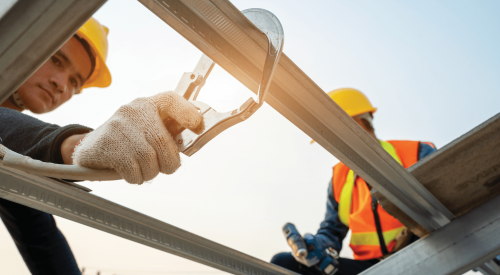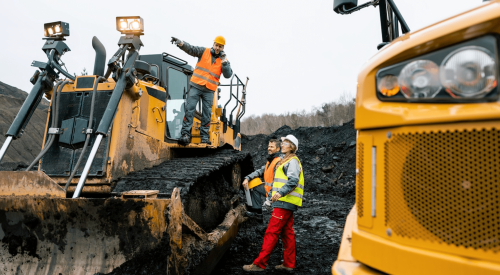Managing the expectations of your customers—who always want a home built faster than it can be executed—is a challenge. Add balancing those demands with the safety of the project and your crew, and the challenge is even bigger. Homebuilders are often pulled in many directions at the same time in an attempt to keep up with the needs of multiple job sites. If a crew at one house needs supplies that you can’t deliver for an hour because you’re at another site two towns over, workers may improvise and end up creating a dangerous situation that violates safety codes. Doing everything at once can also result in calls or emails being forgotten, delaying jobs and generating more potential for risk. (Image: Pixabay)
Project Management. Implementing a workflow and safety reporting tool can help homebuilders better manage their project portfolio, personnel and supplies. For starters, crew chiefs can report into the head boss on a daily basis with a quick update using a mobile app. Instead of being left in the dark about job completion, builders will have a written record stating the work that was accomplished, providing photos for verification. If a job is not completed up to standards, the builder can immediately respond instead of discovering the problem later, when it becomes a bigger issue to fix. More important, jobsite photos can be used to identify any safety violations so workers can correct them before an inspector red flags the job and completion is stalled.
Customer Service. Daily jobsite photos can also be a useful way to soothe customers that want to make sure their home is being constructed exactly as they want it. The last thing any builder wants to hear is that a customer changed their mind about window casings, cabinets or other features after installation.
Safety. What builders dread even more is a call that an injury has occurred on a jobsite. OSHA estimates that each year, 38,000 injuries are reported in the construction industry with 21,000 of those cases resulting in missed days of work. Construction sites are inherently dangerous and workers taking shortcuts or rushing to finish a task can cause injuries that were easily avoidable. A mindset that an accident “can never happen to me” also plays a role.
Homebuilders rely on subcontractors to manage crews that are constantly running up and down ladders, balancing on rooftops, and handling heavy equipment. They must trust that their team will report any negligence. But fear of retribution or slowing down a project, or a desire to avoid medical treatment and costs can lead to injuries. The errors that led up to injuries end up hidden and unreported as well. Providing crews with an easy-to-use app with an anonymous reporting feature can encourage more feedback about unsafe conditions and choices. With additional data, builders can help mitigate daily risks and reduce injuries.
Supplies. A proper reporting tool can also make it easier for workers to report to builders when supplies are needed, when the wrong materials are delivered to a site, or when equipment breaks down. Rapid reports with photos that can be tracked on a dashboard make it easier for builders to track supplier mistakes or crew requests for extra lumber because of shoddy workmanship. Knowing that the boss can instantly respond and fulfill supply needs can also encourage workers to report issues instead of improvising, which, again, can lead to accidents.
Homebuilders can benefit in a variety of ways by implementing workflow and safety management software. The right tool can keep a builder better informed, reduce jobsite accidents and injuries, and protect project timelines and company profits.
Rob Sweeney is founder and CEO of Workplace Aware










